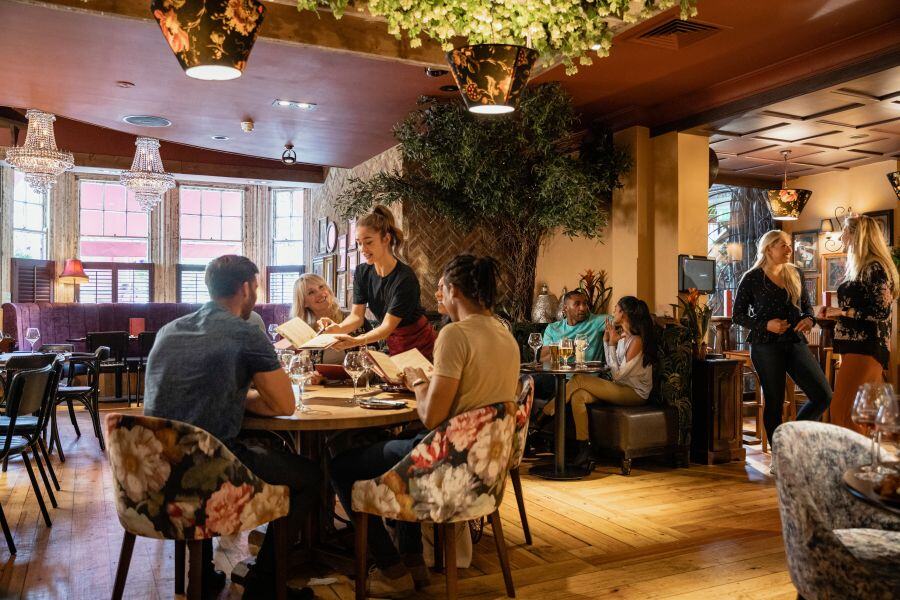Boost Your Business with Creative Packaging Solutions
In business, first impressions are everything.
Innovative packaging design is a great way to stand out in a crowded market. Whether that’s edge guards, shrink wrap and banding packaging for manufacturing materials, disposable bowls and utensils for a restaurant, or boxes for an ecommerce business, you need to see packaging as a critical part of the customer experience. You need to send a strategic, on-brand message with your packaging.
Not only that, but problems with packaging suppliers can also mean higher costs, unsustainable expenses, or shipping problems that leave your business shuttered because you don’t have the packaging you need. For procurement directors or supply chain managers, choosing the right packaging isn't an afterthought — it is a core business process that also defines a brand's identity and enhances customer experience.
This guide will show you how to leverage packaging solutions to grow your business, whether by reducing costs, strengthening your supply chain resiliency or seizing the opportunity to grow your brand.
The Importance of Packaging and Packaging Solutions
In today's competitive market, packaging has evolved from being just a protective shell to serving as a critical touchpoint between brands and customers. Your packaging is often the first physical interaction a consumer has with your product, rendering it a crucial element in the customer experience.
Packaging plays a pivotal role in brand perception. A thoughtfully designed package, even something as simple as a paper or plastic bag, can communicate your brand's values, aesthetics and quality at a glance. It serves as a silent ambassador of your brand, speaking volumes about the care and thought you've invested in your products.
Furthermore, packaging influences purchase decisions. Studies have shown that attractive packaging can sway consumer choices, especially when they are deciding between products of similar quality and price. This makes it an indispensable tool in your marketing arsenal.
Exploring Different Packaging Solutions
There are a lot of options when it comes to packaging.
Each packaging solution has benefits. Factors such as the nature of your product, your target audience, different distribution channels and the experience you want to create with the customer must be considered as you evaluate your packaging options.
Start by considering the primary packaging, which directly contains the product. Depending on what you're selling, this could be a bottle, a box or a bag. Primary packaging needs to be functional and provide product protection. It also needs to be easy to use and appealing to the consumer.
Next, many businesses will use secondary packaging to group primary packages together. This packaging is used during shipping and is typically also seen by consumers. It could include cartons or boxes that contain several individual products, providing an additional layer of protection. Typically, this packaging is focused on efficiency, whether it’s shipping or a bag for retail purchases, but there are growth opportunities with your choice of secondary packaging.
Finally, there's tertiary packaging, primarily used for bulk handling and storage. This includes pallets or shrink wraps and is crucial for ensuring products reach their destination intact, especially in large quantities. Since it is typically used for shipping and storage, consider the end user you are focused on and whether the packaging meets your goals.
As you develop an overall packaging strategy for your business, evaluate every stage of the product lifecycle, from production to shipping to delivery to the end user, and how the packaging strategy can enhance your business goals. Look for opportunities, whether it is reducing costs and expenses, increasing efficiency or improving customer experience.
How You Can Boost Your Business with Packaging
Developing a packaging strategy can yield significant benefits for your business. However, when not handled correctly, packaging can be a major expense, impacting everything from brand perception to operational efficiency. A problem with packaging can even lead to product recalls or worse.
Start by considering how packaging can impact brand recognition. Consumers are more likely to remember and repurchase products that come in distinctive, recognizable packaging, which can lead to increased brand loyalty and repeat business.
Effective packaging minimizes damage during transit, reducing the number of returns and protecting your bottom line. Ensuring the integrity of your products is vital for maintaining customer satisfaction.
Packaging can also be a tremendous drain on resources. Many companies use a single option for packaging supplies, often overpaying by not evaluating other options on the market. Or, supply chain disruption can lead to late or lost shipments, which means lost sales or overpaying for rush delivery.
Finally, packaging can contribute to sustainability efforts. Eco-friendly materials and designs will reduce its environmental footprint. This not only helps the planet but also appeals to the growing segment of eco-conscious consumers.
Six Innovative Packaging Ideas for Business
Once you’ve identified a goal for your packaging strategy and developed a business case, it’s time to craft the details and specifics. Here are a few options to consider for your business:
1. Customization for Impact
Custom packaging allows you to tailor designs that perfectly fit your brand and product. This approach not only enhances visual appeal but also reinforces your brand's identity. Whether it's distinctive shapes, eye-catching colors or unique materials, personalized packaging can leave a lasting impression on consumers.
Customization is especially beneficial for products that don't conform to standard packaging sizes or shapes. By investing in custom solutions, you can ensure your products are protected and presented in the best possible manner and make the unboxing a highlight of the customer experience.
Additionally, custom packaging can serve as a valuable marketing tool. You create cohesive branding that extends beyond the web store or store shelf by incorporating your brand's colors, logo and messaging.
2. Diversify Your Supply Chain
Often, businesses will work with a single supplier for their packaging. This can create numerous problems.
A single supplier can put you at risk for late orders or supply chain disruption, and you can’t sell what you don’t have packaging for. In addition, you could be paying more for packaging. You can’t test the market for pricing clarity if you work with a single supplier. You only know what price they are offering for materials and packaging.
Check costs regularly with other suppliers. Better yet, work with a distributor who works with multiple suppliers. They can provide better visibility into pricing, supply chain resiliency and more packaging options.
3. Sustainability as a Selling Point
Incorporating sustainable packaging solutions is an expectation for many consumers. They prioritize eco-friendly practices and are more likely to support brands that share their values. These customers reward your efforts with their loyalty.
Consider using biodegradable or recyclable materials for your packaging. This reduces environmental impact and appeals to consumers who care about sustainability. Incorporate these sustainability efforts in your branding to further enhance your market appeal.
Furthermore, sustainable packaging may reduce costs in the long run. By opting for materials that require less energy to produce and dispose of, you can achieve cost savings while supporting environmental conservation. Work with a packaging expert to review your business goals and have them provide sustainable options for your packaging.
4. Minimalistic Design for Elegance
Sometimes, less is more when it comes to packaging. That includes minimalistic packaging design. This approach focuses on simplicity and functionality, stripping away unnecessary elements to create a clean and sophisticated look.
Minimalist packaging allows your product to shine without distractions. You create an elegant presentation that appeals to modern consumers seeking authenticity by using simple fonts, colors and imagery.
Furthermore, minimalism often translates to reduced material usage, which can lower production costs and support sustainability initiatives. It's a win-win for both your brand and the environment.
5. Interactive Packaging Experiences
Interactive packaging engages consumers in a unique way, creating memorable experiences that set your brand apart. This could involve augmented reality (AR) elements, QR codes, or gamified features that encourage consumer interaction.
For instance, incorporating a QR code that links to exclusive content, such as behind-the-scenes videos or interactive tutorials, can enhance the unboxing experience. This not only adds value for the consumer but also strengthens brand engagement and loyalty. Not every consumer will engage with the interactive elements, but it shows you and your business are focused on customer experience, and it’s an opportunity to further build brand loyalty.
Interactive packaging can also facilitate data collection. By encouraging consumers to interact with your packaging, you gain valuable insights into their preferences and behaviors, helping you refine your marketing strategies.
6. Personalized Inserts and Additional Elements
Adding personalized inserts or extras to your packaging can elevate customer experience and foster brand loyalty. Consider including thank-you notes, sample products or discount codes to surprise and delight your customers.
Personalized touches humanize your brand, making consumers feel valued and appreciated. This can lead to positive word-of-mouth recommendations and repeat purchases, ultimately boosting your sales and reputation.
Additionally, these extras provide an opportunity to introduce new products or services. You’ll encourage customers to explore your other offerings by including samples or promotional materials.
Turn Your Packaging into a Competitive Advantage
In business, packaging is a critical component of brand experience, and it can position you above the competition. By investing in innovative packaging solutions, you can enhance brand recognition, improve the protection of your product and contribute to sustainability efforts.
From customization to sustainability and minimalism to interactivity, these ideas offer practical ways to elevate your packaging strategy and drive business success.
Leveraging these ideas will empower you to make informed decisions that align with your brand's goals. Take the next step in revolutionizing your approach by exploring the latest innovations for packaging.
Share this
You May Also Like
These Related Stories

4 Simple Steps for Restaurant Success with GO2 Partners’ Business Services

8 Unexpected Ways That Graphic Design Benefits Your Business

